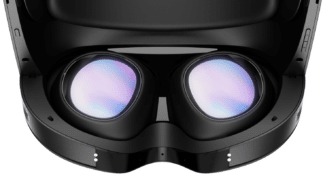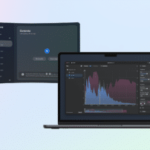The v51 Quest system software update adds local dimming to Link mode on Quest Pro.
Most LCD panels have at most a few LEDs backlighting the entire display, severely limiting the contrast between dark and bright regions. You’ve probably noticed they show dark grey instead of true black. In VR this notably hampers the visual believability of virtual nighttime and experiences set in space.
The main advantage of OLED (eg. PlayStation VR2 and BigScreen Beyond) over LCD is there are no backlights – each pixel is self-illuminating, enabling effectively unlimited contrast and true blacks.
LCDs with local dimming, such as the Quest Pro panels, offer a middle-ground solution. They have many backlights to control brightness in zones – in Quest Pro’s case over 500 mini LEDs.

However, local dimming on Quest Pro is opt-in per-app. App developers have to enable it. Otherwise all 500+ backlights will act together with the same brightness as if a regular LCD. This includes the Link and Air Link PC VR modes – but that’s changing with system software v51. The Public Test Channel build of v51 has local dimming enabled by default for Link and Air Link.
Quest Pro owner spam panini, enrolled in the Public Test Channel, posted a through-the-lens video to YouTube comparing local dimming enabled and disabled in Link and 3rd party open-source Link alternative AXVR which already supported local dimming. Just keep in mind that through-the-lens camera videos like these aren’t fully representative of what you’d actually see wearing a headset, especially given YouTube’s compression.
There is a noticeable disadvantage to all local dimming displays though: blooming. Since the backlight resolution is so much lower than the color resolution – on Quest Pro just 500 mini LEDs for almost 4 million pixels – dark-colored pixels adjacent to light ones will often also be illuminated. Mini LED is a big step over traditional LCD, but is not a full substitute for OLED.





